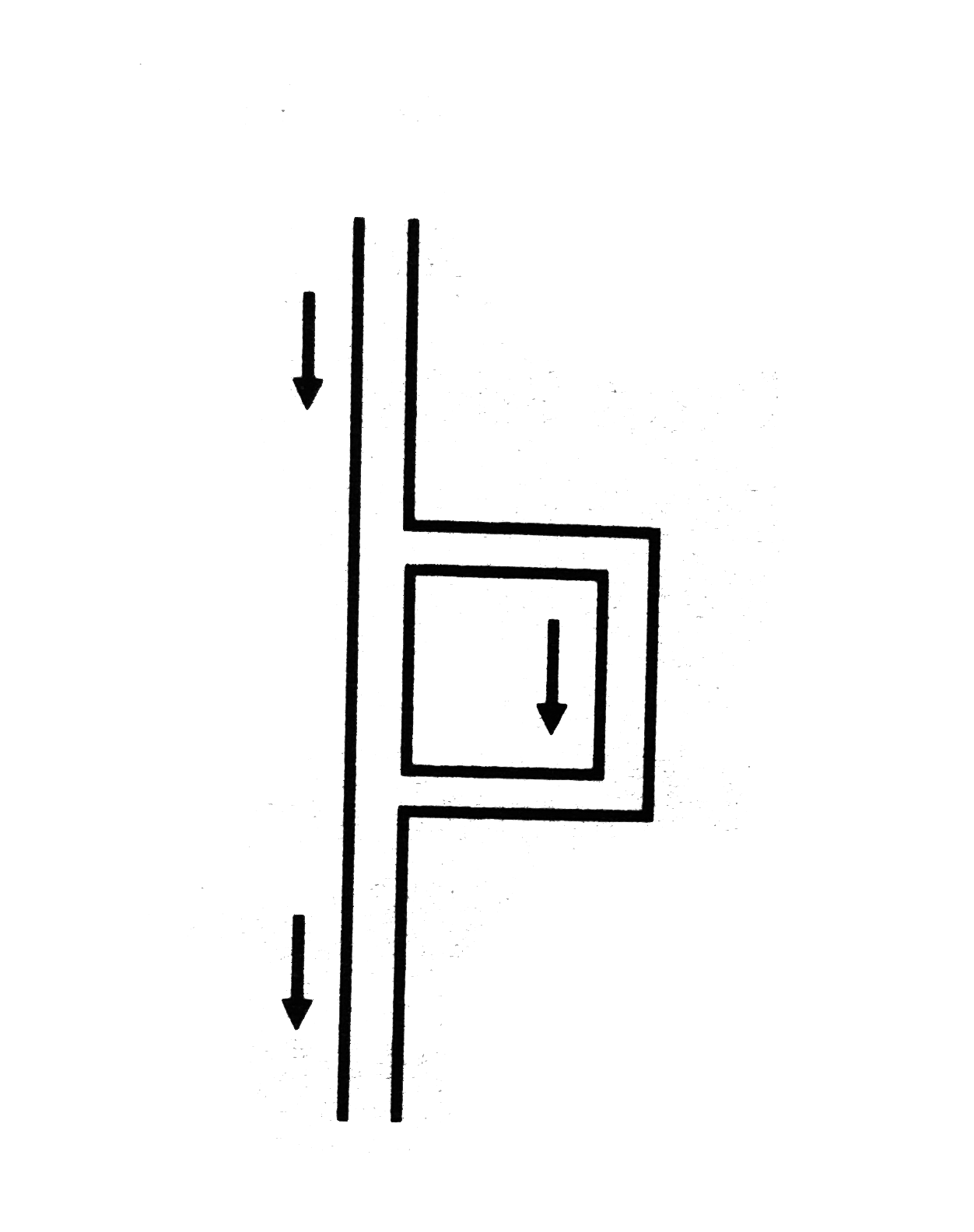Sound waves are passing through two routes- one in straight path and the other along a semicircular path of radius r and are again combined into one pipe and superposed as shown in the figure. If the velocity of sound waves in the pipe is y, then frequencies of resultant waves of maximum amplitude will be integral multiples of

vr(π−2)
vr(π−1)
2vr(π−1)
vr(π+1)
The correct Answer is:A

The path difference between two intefering waves is,
Δx=πr−2r=r(π−2)
For maximum amplitude, Δx=nλ
r(π−2)=nλ or λ=r(n−2)n
Frequency, u=vλ=n[vr(π−2)]
Topper's Solved these Questions
- OSCILLATIONS AND WAVESBOOK - MTG-WBJEECHAPTER - OSCILLATIONS AND WAVESEXERCISE - WB JEE PREVIOUS YEARS QUESTIONS (CATEGORY 3: ONE OR MORE THAN ONE OPTION CORRECT TYPE (2 MARKS))
2 Videos
- OSCILLATIONS AND WAVESBOOK - MTG-WBJEECHAPTER - OSCILLATIONS AND WAVESEXERCISE - WB JEE PREVIOUS YEARS QUESTIONS (CATEGORY 1: SINGLE OPTION CORRECT TYPE (1 MARK))
16 Videos
- NUCLEAR PHYSICBOOK - MTG-WBJEECHAPTER - NUCLEAR PHYSICEXERCISE - WB JEE PREVIOUS YEARS QUESTIONS
5 Videos
- PARTICLE NATURE OF LIGHT AND WAVE PARTICLE DUALISMBOOK - MTG-WBJEECHAPTER - PARTICLE NATURE OF LIGHT AND WAVE PARTICLE DUALISMEXERCISE - WB JEE PREVIOUS YEARS QUESTIONS
15 Videos
Similar Questions
A tuning fork of frequency 250 Hz is vibrating at one end of a tube as shown in the figure. If maximum sound is heard at the other end, then the velocity of the waves will be

View SolutionWhen two sound waves with a phase difference of π/2, and each having amplitude A and frequency ω , are superimposed on each other, then the maximum amplitude and frequency of resultant wave is
View Solution
Knowledge Check
When two sound waves with a phase difference of π/2, and each having amplitude A and frequency ω , are superimposed on each other, then the maximum amplitude and frequency of resultant wave is
AA√2:ω2BA√2:ωC√2A:ω2D√2A:ωA sound wave travelling in a medium is represented as shown in the figure.

If vibrating source of sound makes 360 oscillations in 2 minutes, then the amplitude, wavelength and frequency of the sound wave are respectively (Take velocity of sound as 342 m s−1)A1 m, 114 m and 3 HzB2 m, 3 m and 14 HzC1 m, 5 m and 20 HzD1 m, 100 m and 10 HzTwo waves of equal frequency f and velocity v travel in opposite directions along the same path. The waves have amplitudes A and 3A . Then:
Athe amplitude of the resulting wave varies with position between maxima of amplitude 4A and minima of zero amplitude.Bthe distance between a maxima and adjacent minima of amplitudes is v/2fCmaximum amplitude is 4A and minimum amplitude is 2ADThe position of a maxima or minima of amplitude does not change with time
The wavelength of a sound wave travelling in a solid becomes one third when it propagates through air. If the frequency of the wave remains constant, then find the decreases in the velocity of the wave
View SolutionThe wavelength of a sound wave travelling in a solid becomes one third when it propagates through air. If the frequency of the wave remains constant, then find the decreases in the velocity of the wave
View SolutionTwo waves of equal frequency f and velocity v travel in opposite directions along the same path. The waves have amplitudes A and 3A . Then:
View SolutionA sound consists of four frequencies : 300Hz,600Hz,1200Hzand2400Hz. A sound 'filter' is made by passing this sound through a bifurcate pipe as shown . The sound wave has to travel a distance of 50cm more in the right branch - pipe than in the straight pipe. The speed of sound in air is 300m/s. Then , which of the following frequencies will be almost completely muffled or 'silenced' at the outlet?

View SolutionA sound consists of four frequencies : 300Hz,600Hz,1200Hzand2400Hz. A sound 'filter' is made by passing this sound through a bifurcate pipe as shown . The sound wave has to travel a distance of 50cm more in the right branch - pipe than in the straight pipe. The speed of sound in air is 300m/s. Then , which of the following frequencies will be almost completely muffled or 'silenced' at the outlet?

View Solution
